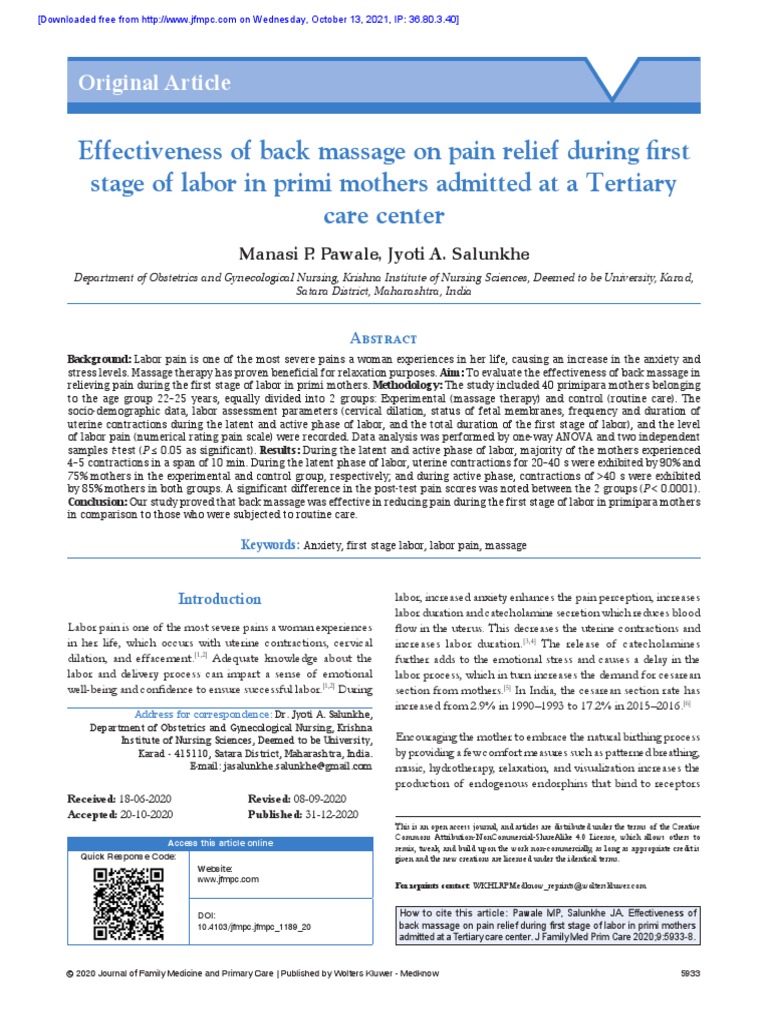Many people suffering from back pain often seek relief through various treatments, with massage therapy being one of the most popular options. However, a looming question persists: can massage make back pain worse? This conundrum demands a comprehensive exploration, considering different massage techniques, individual conditions, and the nuanced interplay between therapeutic touch and bodily response.
To mitigate confusion, it’s important to first delineate the types of massages commonly used for back pain relief. Typically, these include Swedish massage, deep tissue massage, trigger point therapy, and myofascial release. Each technique employs distinct methods and varying levels of pressure, designed to target specific areas of discomfort and tension. Understanding these variations is crucial in addressing whether one might exacerbate existing pain.
Swedish massage, characterized by its gentle strokes and kneading, often promotes relaxation and improves circulation. For individuals with mild to moderate back pain, this style may provide soothing effects, promoting a sense of well-being. However, for those suffering from acute injuries or severe discomfort, the light touch might not adequately address deeper issues, potentially leading to frustration or a feeling of neglect.
In contrast, deep tissue massage employs more forceful pressure to penetrate layers of muscle and fascia. While beneficial for chronic tension and pain resulting from sports injuries or prolonged postural imbalances, it is also associated with a higher risk of increasing discomfort. Overzealous application of pressure could irritate already inflamed muscles or tissues, leading to what is termed post-massage soreness. This phenomenon occurs as the body reacts to the manipulation of its deep structures, and for some, it can escalate into heightened pain rather than alleviation.
Trigger point therapy is another fascinating technique that focuses on specific points of tension within muscle fibers, often referred to as myofascial trigger points. By applying localized pressure, these points can release, alleviating pain referred to other areas of the body. While this method can yield remarkable results, an inexperienced therapist may inadvertently aggravate the surrounding tissues, exacerbating discomfort. Individuals with fibromyalgia or similar conditions may find trigger point therapy particularly intense or overwhelming, leading to a post-session exacerbation of symptoms.
Myofascial release, which aims to relieve restrictions in the fascia surrounding muscles, offers artistic flexibility in application but can also pose risks. If a practitioner lacks adequate training, inappropriate techniques could generate further strain rather than release tension, particularly for those with fragile or compromised fascia.
Another factor to consider is one’s individual body mechanics and the nature of the underlying condition. For instance, someone with herniated discs or spinal stenosis may react quite differently to massage than someone with muscle strain from oversensitivity or overuse. The risk of worsening symptoms can increase dramatically if a therapist is unaware of a client’s medical history or fails to adapt the approach based on real-time feedback. This is where open communication with the massage therapist becomes essential, as voicing concerns during treatment can help to avoid adverse reactions.
It is also paramount to understand that the initial period following a massage can be crucial. Post-massage soreness is a common occurrence and does not always indicate that one’s pain has intensified. Depending on the intention behind the massage, some discomfort may be a necessary consequence of releasing muscle tension. However, distinguishing between beneficial soreness and harmful pain fluctuations requires keen awareness of one’s body signals. Observing how the body responds in the hours and days following a session is key in determining the effectiveness of massage efforts.
Moreover, the environment in which the massage takes place plays an important role. A tranquil, controlled setting can enhance relaxation and mitigate stress responses in the body, fostering a positive experience. Conversely, an overly stimulating environment filled with distractions may lead to an inability to fully relax and can result in increased tension. The body’s initial reaction to stress can make muscle tightness that much worse in the aftermath of an attempt at relief.
Furthermore, expectations surrounding treatment must be framed within realistic parameters. While many seek instant relief, chronic pain often requires a multifaceted approach, integrated with other treatments such as physical therapy, acupuncture, or medicinal interventions. Kristi’s experience with chronic back pain demonstrates that massage, when combined appropriately with other modalities, had a synergistic effect; however, when relied upon in isolation, it sometimes led to greater disappointment and exacerbated discomfort. Patience is often a critical companion on the journey to recovery.
Ultimately, the answer to the question of whether massage can make back pain worse hinges on a complex interplay of factors. These include the type of massage employed, the skill of the practitioner, the specific condition of the individual, and their unique response to the treatment. While many find relief through massage, it is crucial to recognize that it is not a panacea and, in certain situations, may indeed exacerbate discomfort. Consulting with a healthcare provider prior to beginning any massage regime is indispensable, ensuring that all aspects of health and wellness are holistically considered.
In summary, while massage therapy can provide significant relief for many suffering from back pain, it is not without its caveats. When approached with caution, awareness, and professional guidance, it can serve as a valuable ally in the journey toward better spinal health.
